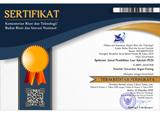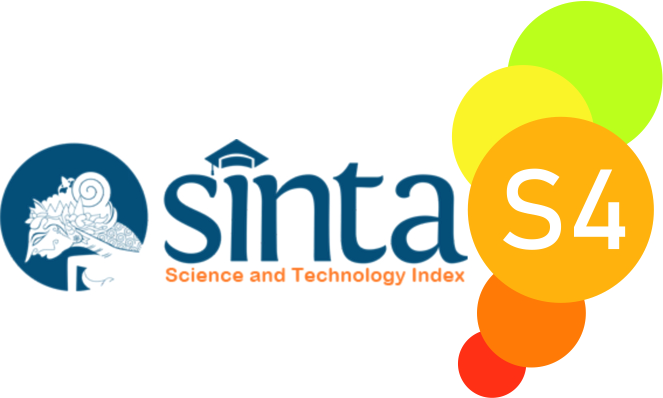The Role of Educators in Improving Children's Spiritual Intelligence through Role Playing Learning Methods
 ),
), (1) Universitas Negeri Padang
 Corresponding Author
Corresponding Author
DOI : https://doi.org/10.24036/spektrumpls.v8i2.108687
Full Text:
 Language : en
Language : en
Abstract
Every child is unique. Children have different bits of intelligence, some have mathematical intelligence, language intelligence, musical intelligence, spiritual intelligence, and others. This research examines spiritual intelligence and the teacher's role in enhancing it through the role-playing method. Spiritual intelligence is an understanding of someone to perform worship in life in accordance with the beliefs they hold. Someone who has spiritual intelligence will associate everything they do with the beliefs they hold. To increase this spiritual intelligence needed the role of educators who help students to improve it. One role of educators is as a mediator and facilitator. Educators should choose what method is suitable for students to improve their spiritual intelligence. One method that can be done is the role-playing method. Researchers examine whether this role-playing method can increase students' spiritual intelligence.
Keywords: Spiritual Intelligence, Role-Playing Methods, Educator Roles
References
Aida, N., & Rini, R. A. P. (2015). Penerapan Metode Bermain Peran untuk Meningkatkan Kemampuan Bersosialisasi Pada Pendidikan Anak Usia Dini. Pesona: Jurnal Psikologi Indonesia, 4(1), 87–99. Retrieved from jurnal.untag-sby.ac.id › persona › article › download
Basuki, K. H. (2015). Pengaruh Kecerdasan Spiritual dan Motivasi Belajar Terhadap Prestasi Belajar Matematika. Jurnal Formatif, 5(2), 120–133. Retrieved from https://media.neliti.com/media/publications/234917-pengaruh-kecerdasan-spiritual-dan-motiva-2a0ba8aa.pdf
Elviana, P. S. O., & Murdiono, M. (2017). Pengaruh Metode Sosiodrama terhadap Hasil Belajar dan Sikap Tanggung Jawab dalam Pembelajaran PKn. Jurnal Civics, 14(1), 33–50. Retrieved from journal.uny.ac.id › civics › article › download
Fatmawati. (2019). Meningkatkan Kreativitas Anak Melalui Kegiatan Bermain pada Pembelajaran Sentra Persiapan di TK Kemala Bhayangkari 29 Kota Jambi. Jurnal Literasiologi, 2(1), 19–37. Retrieved from jurnal.literasikitaindonesia.com › article › download%0A
Laili, H. (2017). Pengaruh Metode Pembelajaran Terhadap Kemampuan Mahasiswa dalam Menerapkan Model-Model Pembelajaran Pada Perkuliahan Strategi Pembelajaran Matematika. Fondatia: Jurnal Pendidikan Dasar, 1(2), 131–149. Retrieved from ejournal.stitpn.ac.id › fondatia › article › download%0A
Maghfiroh, A. S., Usman, J., & Nisa, L. (2020). Penerapan Metode Bermain Peran Terhadap Perkembangan Sosial Emosional Anak Usia Dini di PAUD/KB Al-Munawwarah Pamekasan. Kiddo: Jurnal Pendidikan Islam Anak Usia Dini, 1(1), 1–16. https://doi.org/10.19105/kiddo.v1i1.2978
Marzal, A. (2016). Menulis Kajian Literatur. Jurnal Etnosia, 1(2), 27–36. Retrieved from journal.unhas.ac.id › index.php › etnosia › article › do...
Musyarofah. (2017). Pengembangan Aspek Sosial Anak Usia Dini di Taman Kanak-kanak ABA IV Mangli Jember Tahun 2016. Jurnal Inject: Interdisciplinary Journal of Communication, 2(1), 99–122. Retrieved from https://media.neliti.com/media/publications/223896-pengembangan-aspek-sosial-anak-usia-dini.pdf
Rahmawati, U. (2016). Pengembangan Kecerdasan Spiritual Santri: Studi Terhadap Kegiatan Keagamaan di Rumah TahfizQu Deresan Putri Yogyakarta. Jurnal Penelitian, 10(1), 99–124. Retrieved from https://journal.iainkudus.ac.id/index.php/jurnalPenelitian/article/viewFile/1332/1176
Vidya, H., & Mustikasari, S. (2018). Hubungan Pola Asuh Orang Tua dengan Kemandirian Personal Hugiene Anak Usia Prasekolah di TKIT Permata Mulia Desa Banjaragung Kecamatan Puri Kabupaten Mojokerto. Nurse and Health: Jurnal Keperawatan, 7(1), 51–60. Retrieved from ejournal-kertacendekia.id › nhjk › article › download
 Article Metrics
Article Metrics
 Abstract Views : 266 times
Abstract Views : 266 times
 PDF Downloaded : 121 times
PDF Downloaded : 121 times
Refbacks
- There are currently no refbacks.

This work is licensed under a Creative Commons Attribution-NonCommercial 4.0 International License.



